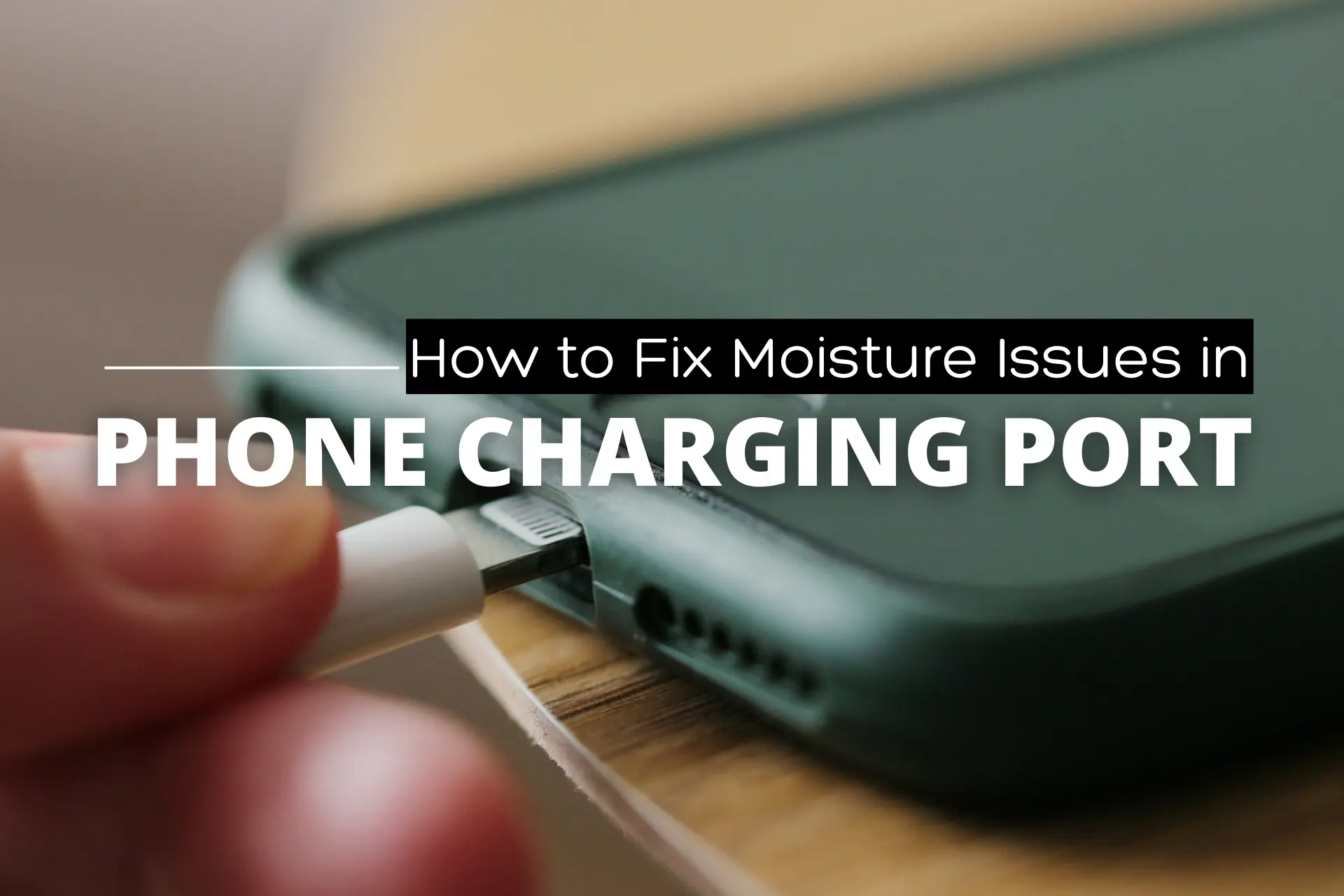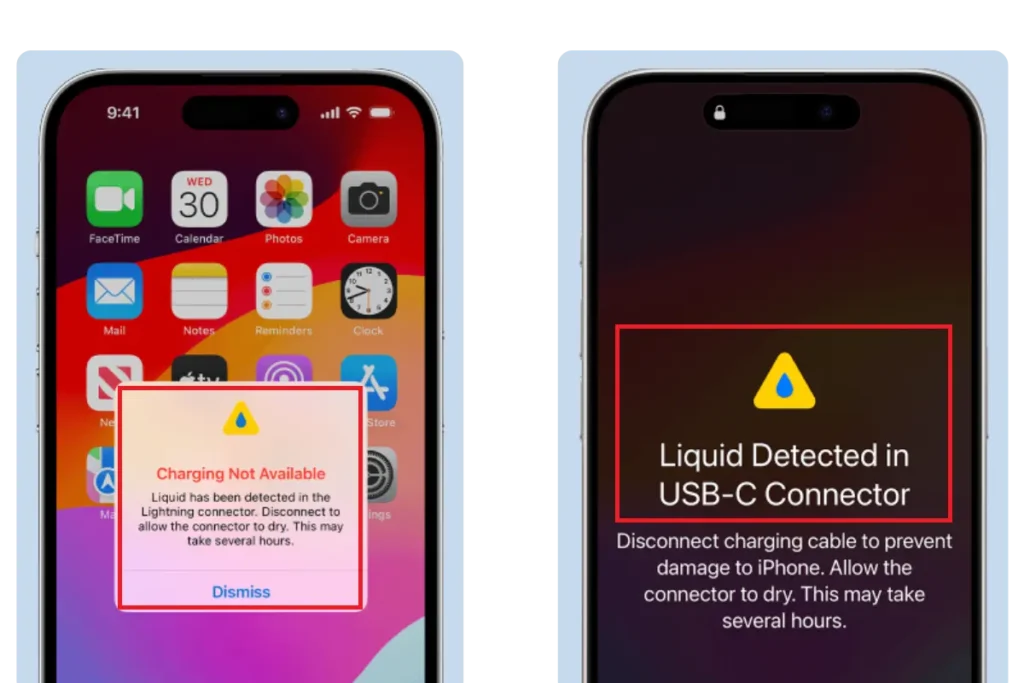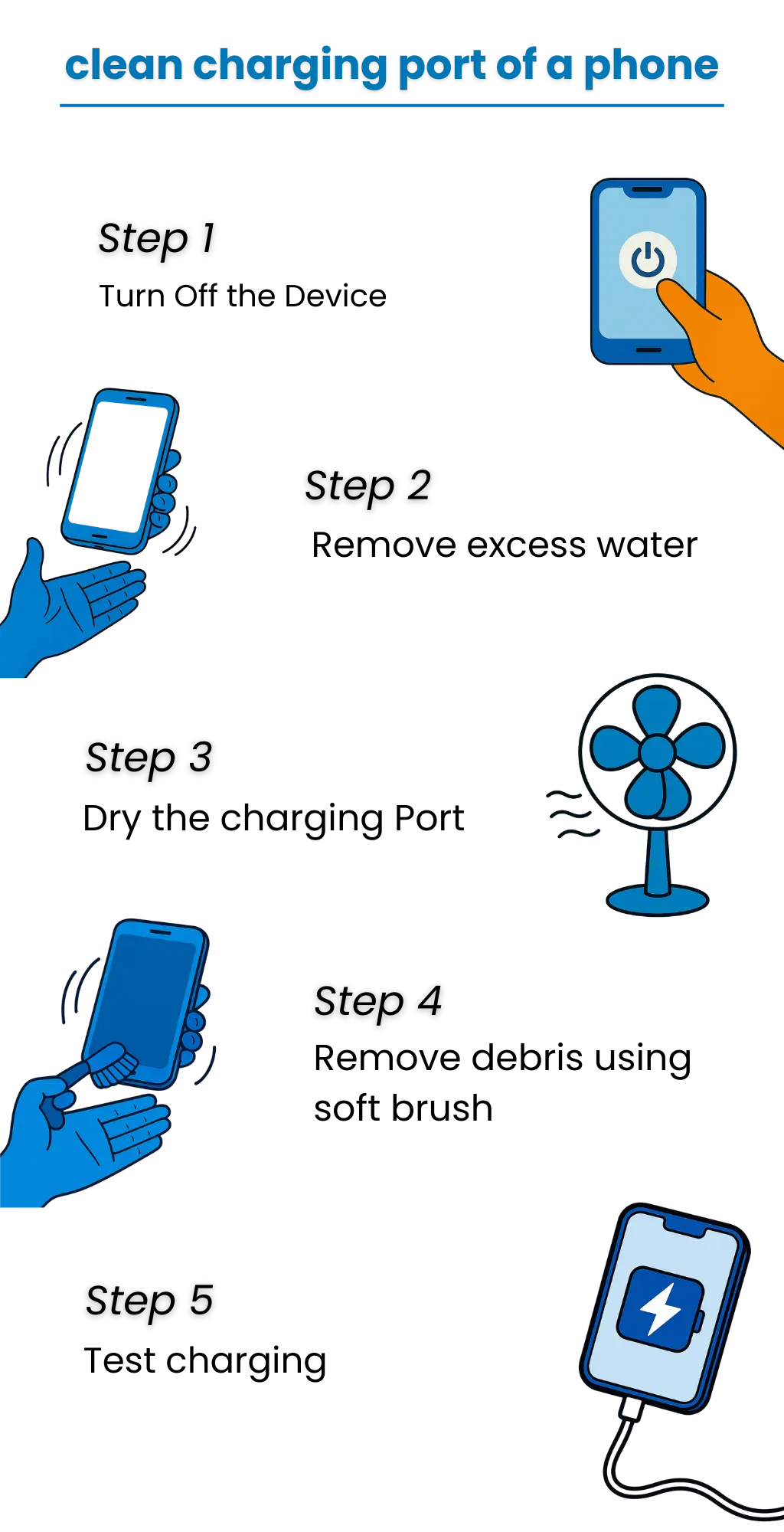How to Clean Charging Port on iPhone & Android safely

I still remember my friend’s face when a cup of tea slipped from his hand and spilled directly onto his phone in a restaurant. He wiped it as quickly as he could, but the damage was already done. Moisture warning popped up every time he tried to charge it.
This kind of accident can happen to anyone — you, me, or someone carrying their phone out in heavy rain, knocking over a glass of juice or water onto the table where the phone is resting, or leaving it in a gym outfit after a workout….. But the question is: How to clean an iPhone charging port without damage?
While official guidelines offer general solutions, real user experiences often provide practical insights. Combining both can help you resolve the issue more effectively.
Moisture and dust in the charging port
With technology advancing day by day, new phones are now being launched with features like water resistance. However, over time, the seals that protect against moisture can wear down, allowing water and dust to enter. Even Apple warns that devices can lose splash protection over time, and liquid detection alerts show when your iPhone may be at risk of water damage.
How Moisture Detection Works in Smartphones

When a phone’s charging port detects water or moisture, it typically shows a warning to alert the user. This notification prompts you to disconnect the charger and give the port time to dry before using it again, helping to keep the device safe and functional.
User Reports on Moisture Alerts in Charging Ports
Many users have faced the “moisture detected” warning in their phone’s charging port. By checking their experiences and discussions online, you can get practical insights on what worked for them and what didn’t. just check it below!
How to Clean charging port on iPhone & Samsung
If you don’t know how to clean charging port on iPhone 16 Pro (Lightning port) or the Samsung (USB-C port)Don’t worry—just follow these simple steps to charge your phone again without any problem.
Step 1: Turn off the Device and inspect the charging port:
The first and most important step is to power off your device. This stops electricity from running through any moisture inside, which could lead to short circuits, corrosion, or even permanent damage to the internal parts. After that, check the charging port under good lighting so you can clearly see its condition.
Step 2: Remove excess water
Take off the case so water doesn’t stay trapped between it and the phone. Use a soft microfiber cloth to wipe the front, back, and sides until it feels dry. Hold the phone with the charging port facing down and give it a few light taps on your other hand to eject water safely without pushing it deeper inside.
Step 3: Dry the charging port
Place the phone somewhere airy, like near an open window or under a desk fan. This helps any remaining moisture evaporate and dry out the device. To make it quicker, you can set it near a fan and let the air blow over it. Check Samsung’s official guide for safe steps.
Step 4: Clean Debris
Clear dust and loose lint from hard-to-reach areas of the charging port by using a soft-bristle brush or a toothpick, taking care not to damage the delicate internal components of the port.
Step 5: Use isopropyl alcohol (Optional)
For any stubborn lint or sticky residue left in the port, lightly spray a small amount of isopropyl alcohol onto a cotton swab. Gently insert it into the port and clean without applying too much pressure.
Step 6: Test Charging
After cleaning and drying, connect your original cable and adapter to test charging. If supported, you can also use a compatible wireless charging pad, ensuring both the port and pad are dry and clean.

Common mistakes to avoid:
Apple, Samsung & other manufacturers advise avoiding the following mistakes to prevent further damage:
Tools required to remove water from the charging port
To safely remove water or debris from your charging port, it’s best to keep a few simple tools ready. These items make the process easier and reduce the risk of damage:
Errors That May Appear After Cleaning the Port
Even after properly cleaning your charging port, some errors or warnings might still appear:
Warnings:
You may see a “Liquid Detected in USB-C Connector” message even after the water removal process. This indicates that a small amount of moisture is still present in the port. To prevent short circuits or damage, your device will ask you to ensure the port is completely dry before charging.
Slow Charging:
If your device is charging slower than usual, it could be due to moisture, dust, or residue still inside the port affecting the connection.
Conclusion
Moisture in the charging port is a common problem. With a little patience and the right steps, your phone usually goes back to normal. Just dry it properly, avoid quick, risky fixes, and if the warning still shows up, seek professional help!
FAQs – Frequently Asked Questions
Why iPhone not charging?
A number of factors can prevent your iPhone from charging, including a damaged charging cable or adapter, debris (dust, lint, or moisture) trapped in the charging port, software glitch, and an issue with the battery or internal hardware.
How to clean iPhone charging port without toothpick?
Brushing the charging port with a soft-bristled brush to remove gunk, or cleaning it with lint-free cotton, is the best DIY solution.
How to clean iPhone charging port with hot glue?
Don’t insert glue in the charging port, as it can leave residue behind, which can cause further damage.
How to clean iPhone charging port with alcohol?
You can slightly dampen a piece of lint-free cotton in 70% isopropyl alcohol to remove sticky residue, but do not use an excessive amount to prevent damage.
How to clean charging port without compressed air?
First, clean the dirty charging port with a soft-bristled brush, and then keep it in an open ventilation area for moisture removal.
Can I clean my iPhone charging port with a paperclip or needle?
No. Using metal objects like a paperclip, pin, and needle is strictly prohibited. They can permanently damage the sensitive internal pins of the port.
